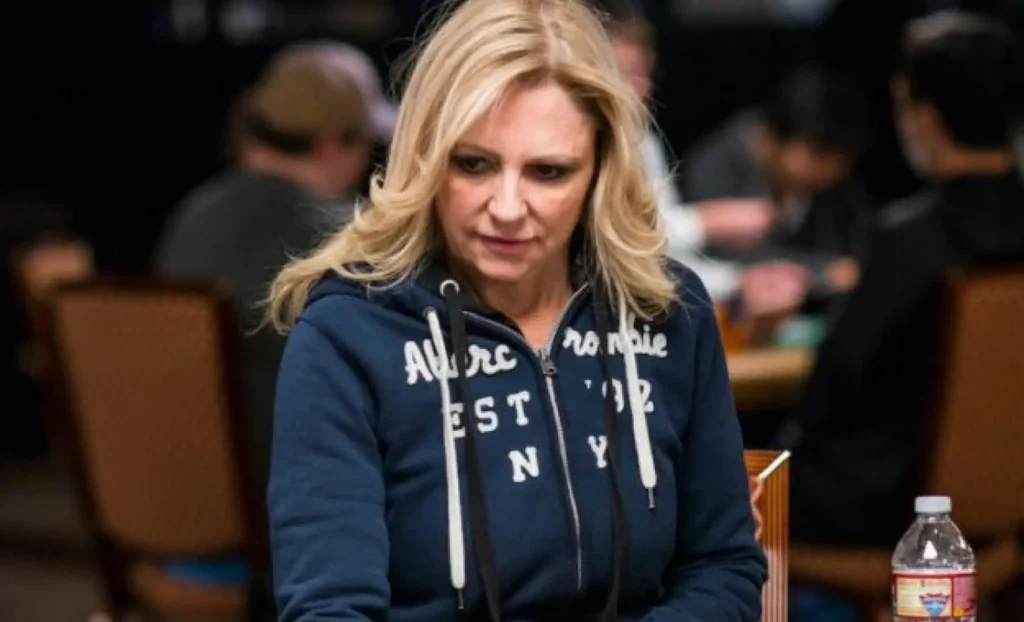
One of the All-Time Greats
When the poker boom was in full bloom throughout the noughties, there was only one female poker player you’d find consistently battling in the highest stakes cash games in the world. There was only one female poker player among The Corporation who played in the biggest poker game of all time. There was only female poker player who took center stage among the superstars in Full Tilt Poker advertising. And until 2012, there was only one female poker player who possessed two WSOP bracelets.
That player is, of course, the brilliant Jennifer Harman. Not only is she one of the greatest female poker players of all time, but Harman is also undisputedly one of the best and most influential players the game has ever seen.
While Harman doesn’t play in the spotlight as much as she once did, she remains a true icon and inspired a generation of young women to take up poker. Kristen Bicknell – arguably the best female poker player in the world at the time of writing – has said she looked up to Harman and watched her play repeatedly on popular TV shows such as ‘Poker After Dark’ and ‘High Stakes Poker’. If not for Harman’s presence in those big games, poker’s gender balance might be even more slanted than it remains today.
But it’s not just women who have looked up to Harman. Daniel Negreanu, one of the biggest names in the game, met Harman as a young upstart and has considered her an inspiration and best friend for decades. “Negreanu is like a brother to me,” Harman says.
With $2.7 million in live tournament winnings and countless millions won in cash games, it came as no surprise when Harman was inducted into the prestigious Poker Hall of Fame in 2015. She’s done it all, from raising her kids while playing high stakes to raising money for charity, as well as being invited by the Godfather of Poker, Doyle Brunson, to write a Limit Hold’em chapter in his Super System II book.
And she’s done it all despite the health issues she’s battled for most of her adult life.
“I just try to live life to the fullest when I can and not think about anything else,” Harman says. “Because I know how important life really is.”
Early Battles
Harman was born in Reno, Nevada – not far from the Las Vegas cardrooms she’d one day consider her office – on November 19, 1964.
It was her father who first introduced her to poker, albeit reluctantly. He’d have a weekly home game and a young and intrigued Harman would sneak in to rail the action, desperate to know how and why poker chips were being tossed back and forth upon the table.
Eventually, he caved and told her how the game worked. By the age of 12, she would take her father’s seat in the game when he was losing.
But it was her mother who really taught her how to play. “I’d play with my cousins growing up and she would deal to make sure that we played right,” Harman said. “We always played games in the house – Scrabble, Monopoly, Life – so I was always very competitive.”
Throughout her teens, it became clear to Harman that she had a real knack for playing poker. So much so that she obtained a fake ID when she was 16 in order to sneak into her local casinos and play, all the while keeping her new passion a secret from her family.
But tragically, just as she was getting to grips with the game, her mother became sick due to issues with her kidneys. “Me and my sister started taking care of her,” Harman said. “Bringing her to dialysis, stuff like that. My dad was working all the time, he wasn’t really around.”
Harman’s mother sadly passed away from kidney failure a year later. This was a crushing loss for the then 17-year-old, who was extremely close to her mother.
To make matters worse, Harman herself soon had similar health issues. “I had kidney failure myself really young,” she said. “When I had my first transplant, I decided that living life day by day is the most important thing.”
Putting her poker play to one side, Harman decided to attend the University of Nevada and a few years later graduated with a degree in biology. But once her education was behind her, that poker bug came crawling back. Rather than pursuing work in science, she continued to play poker for money.
“I always figured that I’d get a job at some point, but I didn’t know what I wanted to do,” Harman said. “I never made a huge decision to become a poker player. It just happened.”
But this way of life upset the man who first introduced her to the game: her father. He felt conflicted about Harman’s life choices and Harman’s determination to continue playing poker ultimately put a strain on their relationship.
Harman then fell in love and moved to the East Coast with her boyfriend to start a business. Unfortunately, that business went under and left Harman in debt. She borrowed money from her grandmother, moved to Las Vegas, and with nothing else to do, ended up playing poker.
“I got out of debt, paid back my grandmother, and bought a house within, like, four months,” Harman said.
She was now, officially, a professional.
“I Don’t Care About the Woman Thing…”
Everything was finally going smoothly. Jennifer Harman’s net worth was bigger than ever, and she was climbing the stakes in the biggest games Las Vegas had to offer.
“Back in 1993, I was playing higher,” she said. “I was playing $150/$300, $200/$400, $300/$600 Limit Hold’em, and I built a pretty good bankroll, around $700,000. I don’t know if that’s a lot to play for $300/$600, but I was successful at it.”
But more bad luck was just around the corner.
Harman and her husband divorced. Her ex took most of her bankroll, leaving Harman with around $70,000 with which to play. Keen to make it back, she continued playing high – too high for this much lower bankroll – and was on the verge of going broke. But after borrowing $45,000 from a friend, she managed to grind her way back to the point where she could comfortably play the highest stakes every day.
By 1997, she was crushing the $400/$800 limits, a game she spent a year playing. Because these games featured a rotation of different poker variants – including Seven Card Stud and Omaha –Harman became world class in all of them. She kept getting better and the stakes kept rising. First $800/$1,600, then $1,000/$2,000.
Any railbirds who were poking their heads into Bobby’s Room at the Bellagio – the home of the big game – would have singled Harman out immediately from the rest of the line-up. The reason? She was the only woman to play the big game regularly. In fact, she was the only woman to have ever played in the big game.
This, however, never crossed Harman’s mind. “I don’t care about the woman thing,” she said. “I’m not competing only against women. I’m competing against men. I don’t think about poker as a gender thing. I want to compete with everybody. They all think of me as one of the guys anyway.”
The fact that more women don’t make it to the highest stakes of poker puzzles Harman. “I don’t know why that is, I really don’t,” she said. “Sometimes it stumps me why more women aren’t playing in higher cash games. Women have great instincts.”
The Corporation
Harman’s instincts had not only got her a regular seat in the biggest cash games running, but also the respect of all of poker’s elite players. So, when a rich banker named Andy Beal came to Las Vegas in the early noughties looking to play the pros heads-up at Limit Hold’em for extraordinarily high stakes, it came as no surprise that she would get in the mix.
Beal, a wealthy businessman who’d forged a fortune in banking and real estate, first came to the Strip as an amateur, but went home determined to return and beat the game’s biggest names. His plan was to both study the game intensely, but also to raise the stakes so high that it forced the grizzled veterans out of their comfort zone.
To handle the massive buy-ins and potential losses, the pros formed a group which became known as The Corporation. They would pool their millions together in order to have a bankroll big enough to play Beal at his preferred stakes. The group included Harman, Phil Ivey, Doyle Brunson, Todd Brunson, Ted Forrest, Minh Ly, Howard Lederer, David Grey, Chip Reese, Gus Hansen, Barry Greenstein, Lyle Berman and others.
“It was weird because nobody had ever played that high,” Harman said. “We started playing $10K/$20K, then it went up to $100K/$200K. The limits grew but you got used to playing [at each stake].
“The thing that was tough wasn’t necessarily playing Andy, but that the whole group was behind you, so there was a lot more pressure. If you’re confident in poker you can sit down and play and it’s just another poker game. It’s just that everybody wanted me to do really well.”
After plenty of ups and downs, the group ultimately won more than $16 million from Beal, who proceeded to retire from poker. The fascinating story was documented by author Michael Craig in his book “The Professor, the Banker, and the Suicide King”.
When she was not battling against Beal, Harman also undertook a new challenge: poker tournaments. Back then, tournaments were considered a crapshoot by many of the top pros. But her good friend Daniel Negreanu was playing a lot of them and encouraged Harman to try them. “I thought I’d give it a shot,” she said. “It was something different, a challenge,”.
It turned out Harman was a natural. In 2000, she won her first World Series of Poker bracelet in a $5,000 No Limit Deuce to Seven Draw event for $146,250 – incredible given that she was not familiar with the game and only learned how to play properly the morning of the event.
She followed that in 2002 by winning her second bracelet in a $5,000 Limit Hold’em tournament, good for $212,400. With that, she became the first woman to win two WSOP bracelets. (Vanessa Selbst matched Harman’s feat in 2012, then won her third bracelet in 2014).
To date, Harman has $2.7 million in tournament cashes. Not bad for someone who rarely plays them.
Harman’s biggest tournament results
| Date | Buy-In | Event Title | Winnings |
|---|---|---|---|
| 2005 | $10,000 | WSOP NLHE Circuit Championship event | 2nd for $383,840 |
| 2008 | $10,000 | WPT Bay 101 Shooting Star | 3rd for $330,000 |
| 2004 | $15,000 | WPT Five-Diamond World Poker Classic | 4th for $299,492 |
| 2002 | $5,000 | WSOP Limit Hold’em | 1st for $212,400 |
| 2010 | $10,000 | WSOP Seven Card Stud Hi/Lo 8 Championship | 3rd for $173,159 |
| 2000 | $5,000 | WSOP No Limit Deuce to Seven Draw | 1st for $146,250 |
Her legacy as one of the best poker players of all time was cemented further in 2005 when Doyle Brunson was putting together Super System II – the sequel to his 1978 book considered by many to be the best poker strategy book ever written. Brunson asked Harman to pen a chapter on Limit Hold’em, the game she’d played for astronomical stakes and in which she’d won a WSOP bracelet.
Then, in 2015, she was inducted into the prestigious Poker Hall of Fame.
“I’ve always loved and continue to love poker,” she said. “I like to learn new things, study the game, compete. I will be playing forever. This is a unique game. My brain is constantly in suspense, and I like it.”
“They are my life…”
Because she’s had so much success in poker, it’s easy to forget that Jen Harman has constantly had to battle health issues behind closed doors.
In 2004, Harman was forced to step away from the tables for around a year in order to have a second kidney transplant. During this time, she founded Creating Organ Donation Awareness (CODA), a non-profit organization with the goal of raising money and making it easier for those who need transplants to receive them.
Charitable work became a habit for Harman. She has hosted many charity poker tournaments, often serving as the host. In 2009, one of her events raised $111,000 for the National Kidney Foundation, and she has raised hundreds of thousands for animal welfare charities including the Nevada Society for the Prevention of Cruelty to Animals (NSPCA). In 2007 Harman launched the Jennifer Harman Charity Poker Tournament at the Venetian poker room in Las Vegas, the third instalment of which raised more than half a million dollars.
But when asked what’s most important to her, Harman replied: “I think this has to be my kids. They are my life.”
These days, Harman doesn’t play poker as much as she once did. That’s because she’s a devoted mother. “I go to soccer practice, help them with their homework, host play dates with their friends at the house, and stuff like that,” she said. “So, I’m just a regular single mom when they’re with me, and I play a lot of poker the rest of the time.”
Looking back over her incredible career, Harman is extremely proud of everything she has achieved.
“I like to compete with others, and I’ve always wanted to be the best,” she said. “I play with the best of the best. And I want to be the best mom in the world – just for my kids.”
Other Player Profiles
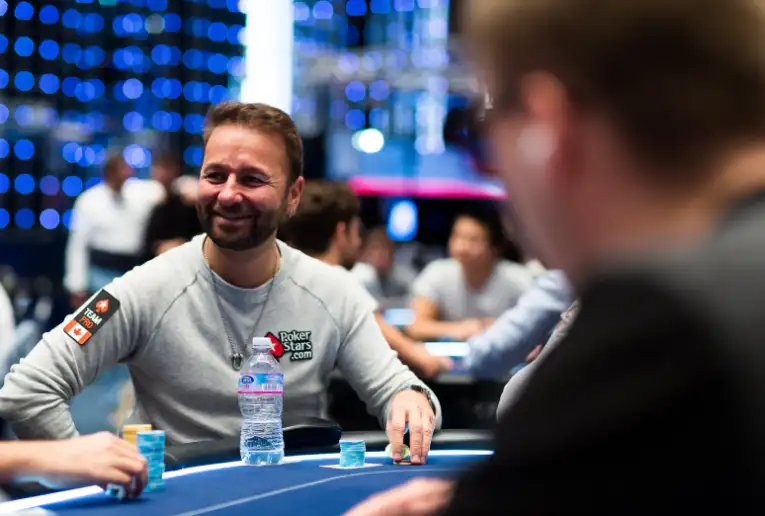
The question of who is the world’s best poker player will never accurately be answered. It depends on…
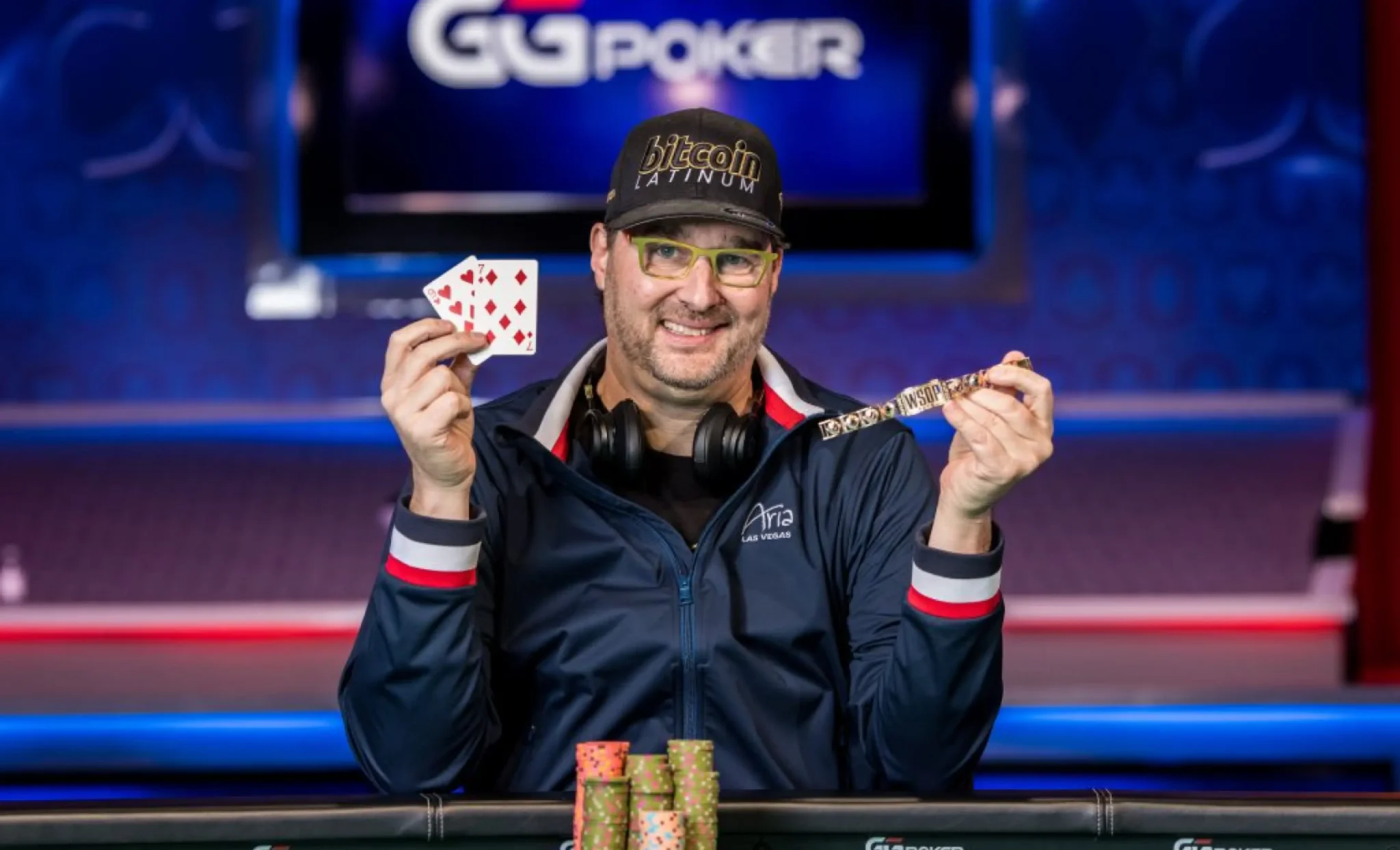
The word ‘polarizing’ is commonplace in poker, although it’s often reserved for strategy…
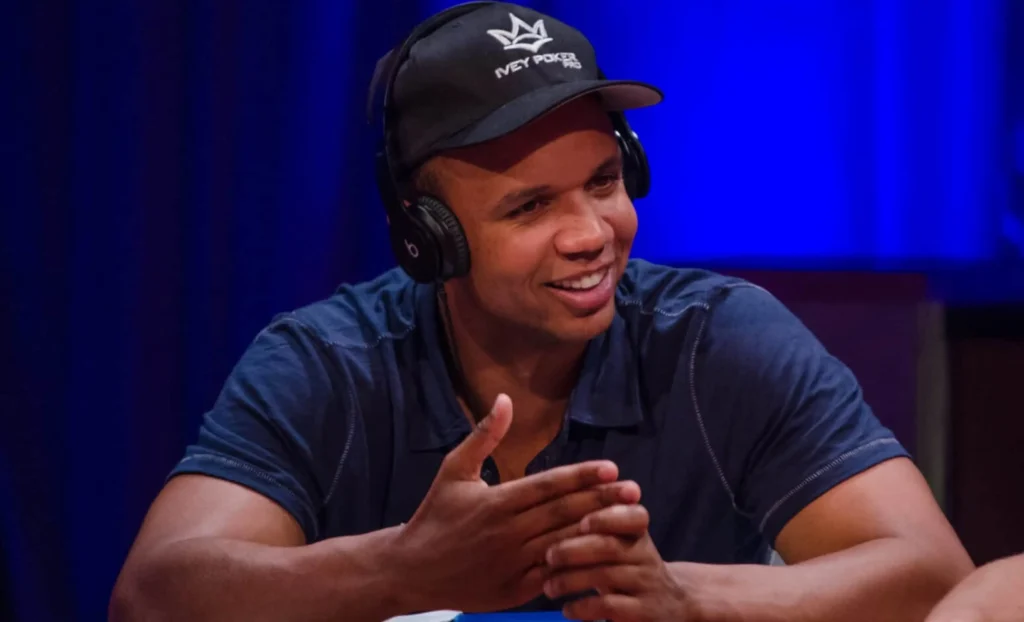
No matter how many superstars occupy the top echelons of any sport, there always tends to be one…
More Big Winners
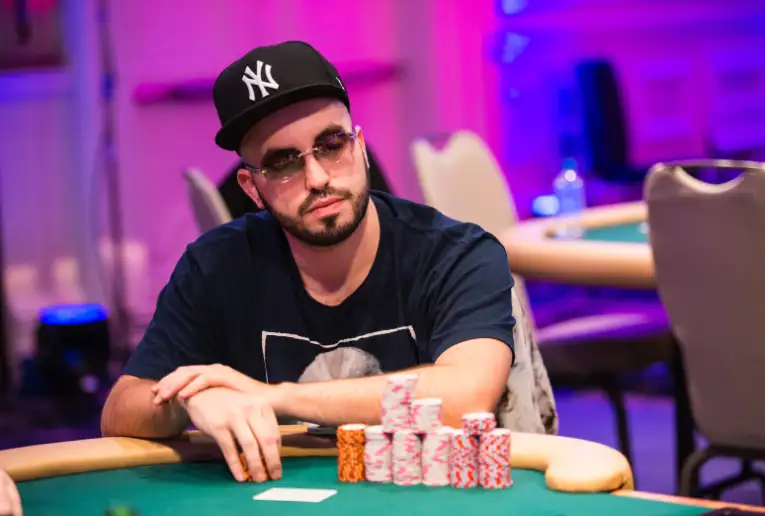
10 Of The Best Male Poker Players In The World
Who are the world’s best professional poker players? This page lists 10 of the top male…
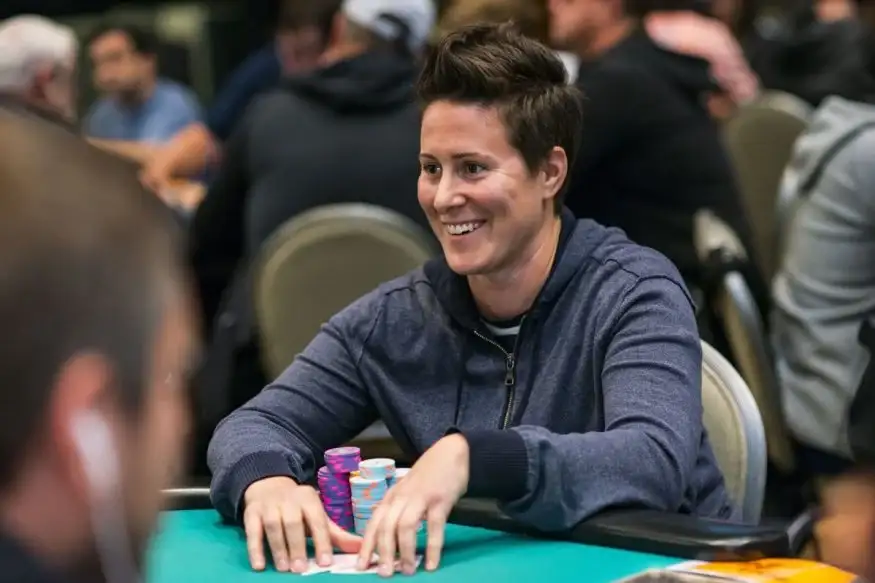
10 Of The Best Female Poker Players In The World
We’ve listed the top 10 female poker players, including what tournaments they won and…

World Series of Poker 2025
Find out more about the World Series of Poker including the official tournament schedule, results, news, videos, history and details of previous winners!
What Next?
Discover poker news stories from our CardsChat community members as well as free poker strategy guides to help raise your game to the next level. When you’re ready to play for real take a look at our guide to the best real money poker sites.